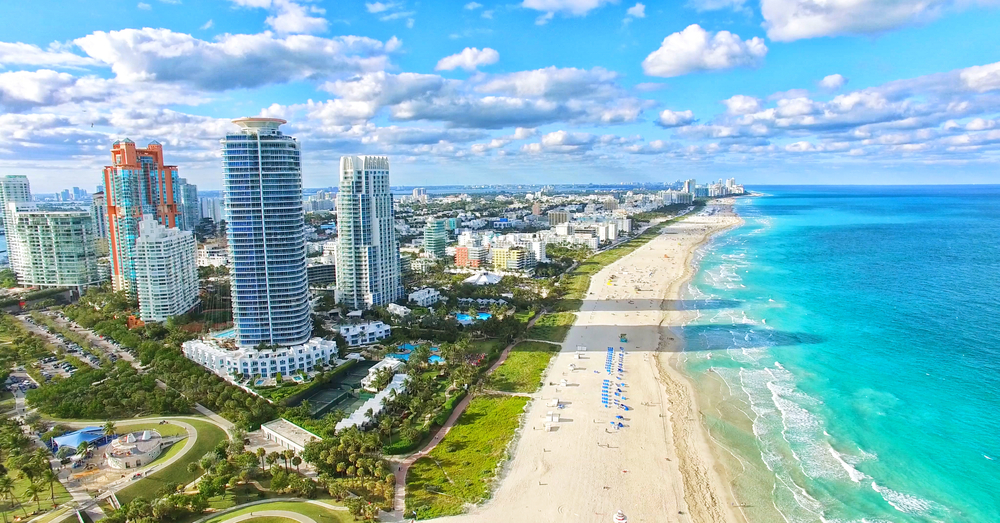
Whether you’re a Florida native with home state pride or an out-of-state student looking for a cutting edge education, the Sunshine State has many great colleges or universities to consider. With over 150 schools throughout Florida, it’s hard to know where to start.
But don’t worry. You’ll be able to narrow down the list fairly quickly by answering these six questions on how to choose a college or university in Florida. They’ll give you a better sense of your preferences and what’s most important to you.
1. Does the college or university have a strong program in your preferred major?
If you’ve decided on a major, this is an easy way to create a shortlist of schools. You can use reputable sources like US News and World Report to search for a university based on location and major. Your next step is to see how they stack up against each other. You can do this by requesting program information, talking to current students and faculty, and looking into where their graduates are now. Choosing a university that has a reputation for your major will make you a better job candidate after graduation.
If you’re undecided, it’s better to find a school with excellent liberal arts programs that could lead to a variety of careers. For example, some of St. Thomas University’s most popular majors include Psychology, Biology, and Business Administration, all of which provide a great starting point for many career paths.
2. What’s the size of the college or university?
You probably already have a sense of whether you’d prefer a small or large campus, but don’t make up your mind before visiting a few in person. Even large schools can have a small-campus feeling if most of your classes are clustered in a certain area. Likewise, even small campuses can feel larger when they’re tucked within a large city. Talk to current students to see how they adapted to the campus environment and what their expectations were before they arrived.
Keep in mind whether you prefer small class sizes and immediate access to faculty. How do you learn best? At St. Thomas University, our ratio of students to faculty is 11:1. This allows each student to benefit from a more personalized educational experience. If you crave the opportunity for discussion and debate, just remember that won’t always be possible in classes with hundreds of students. However, you might prefer the anonymity of a large campus and be confident about learning at your own pace. Give it some thought before you remove any schools from the running.

As you think about the size of the school, consider whether you’d prefer to be in smaller classes with more opportunity to interact with the professor and other students.
3. Where is the campus located?
Florida is the eighth largest state, so it’s important to research the weather and environment of each region. While Florida is considerably warmer than many other states, it still does experience winter – at least it does the farther north you go. If you love warm weather and want the mildest winters of your life, then you should choose a school in South Florida. If winter is your favorite season and you want the weather to at least drop below the fifties, then north Florida might be a better fit for you.
You should also consider where the school is situated – whether it’s in an urban, suburban, or rural environment. Would you be more interested in a slow-paced, rural area of Florida like Gainesville? Or a suburban area like Tallahassee? Or perhaps the stimulating urban environment of St. Thomas University in Miami would be more your style. And what about the natural environment? Do tall groves of pine trees swaying in the wind speak to your soul? Or are you the kind of person who cannot survive without a visit to the beach every day?

Think about what region of Florida appeals to you. Miami offers an urban experience, but also has access to beautiful natural settings like South Beach.
4. What learning opportunities does the college or university offer outside the classroom?
Employers are looking for college graduates with tangible skills who can hit the ground running. It’s smart to prioritize your college choices by their emphasis on hands-on learning. Here are a few things to look for:
- Does your program of study include an internship?
- Does the university have an internship department that builds relationships with local businesses and organizations?
- Does the university have study abroad programs?
- Do they offer service learning or other volunteer opportunities?
- Do they encourage and support involvement in national competitions or contests?
STU strives to provide students with enrichment opportunities through its robust Career Services resources. Student’s are provided one-on-one career advisement that includes study abroad opportunities, world-class internships, national competitions, resume building, and professional referrals through our network of partnerships.
In addition to providing career-boosting opportunities, St. Thomas University students are encouraged to take their research and skills from the classroom into the local and regional, and international community to give back through volunteer community engagement projects that aim to tackle issues of inequality, poverty and beyond.
Be proactive in your education by selecting a college that understands the importance of learning by doing.
5. What’s the culture of the college or university?
Every college has its own unique vibe. That’s one of the most exciting parts of visiting different schools – imagining yourself in the midst of it all. If you’re trying to get a sense of the campus culture, check out their social media. Many schools encourage students to share their experiences using hashtags. You can get a snapshot of the average day, straight from the source.
Another factor to consider is whether the school has a religious tradition or philosophical perspective that appeals to you. St. Thomas University is a Catholic university, so its Campus Ministry offers retreat experiences, faith sharing groups, and Bible study. This adds another element to the learning experiences for students inclined to spiritual growth.
The diversity and openness of the college culture is also important. If you want to expand your horizons by meeting people different from you, seek out a school that’s located in a diverse area or that welcomes international students and faculty. St. Thomas ranks third on US News & World Report’s list of most international students at a regional university.
6. What financial aid does the college or university offer?
When thinking about how to choose a college, many students will immediately eliminate possible contenders by cost. But don’t do that too early. Figure out what your true investment will be after financial aid. You should always start by completing the Free Application for Federal Student Aid (FAFSA) to take advantage of federal and state grants. Then, make sure you’ve thoroughly searched all possible scholarship opportunities. A good resource is the Department of Labor’s scholarship directory on CareerOneStop.
Once you’ve done that, talk to the financial aid offices of your top choices to see if they offer scholarships for sports participation, academic achievement, or other criteria. With a better understanding of your financial aid, you can more accurately compare the cost of different schools.
—
Choosing a university is tough. But there are so many great Florida colleges (including three in the top 100 schools of 2019) that no matter which school you end up selecting, there’s no doubt you’ll have a meaningful and productive experience. Just review these tips before making your final decision to find the best school possible for you. If you’re interested in learning more about St. Thomas University, contact us today!

